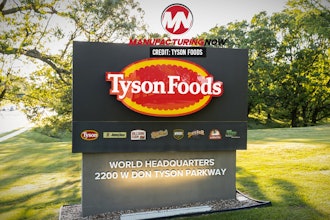Research by the American College of Allergy, Asthma and Immunology (ACAAI) suggests that peanut allergies in children has increased by 21 percent since 2010. Food allergies are a growing public health concern, and one that the food processing industry must respond to. Miguel Campos, export sales manager at food packaging supplier Advanta explains.
Approximately 90 percent of allergic reactions stem from just eight foods: milk, eggs, peanuts, tree nuts, soy, wheat, fish and shellfish. These common allergies cause a colossal 300,000 ambulatory-care visits per year in the US — and that’s just among children.
The reasons behind the rise in allergies are widely debated. The truth is, no one really knows the exact answer. Some theories suggest it is due to Western society’s so-called obsession with fighting germs, whereas others put it down to specific food avoidance.
Whatever the cause, with the incidence of food allergies and food intolerance on the increase, food manufacturers and caterers face increasing challenges in the ways in which they prepare and label food.
The food industry has responded by implementing allergen risk management practices, while reducing unintended exposure of allergens to its food products. This has also led to the rapid uptake of advisory labelling.
However, a study by Imperial College London has found labelling to be widely inconsistent when reporting on allergenic contents. Phrases such as “does not contain nuts but is made in a factory that uses nuts” or “produced on shared equipment which also processes nuts” are adding to the complexity.
For consumers, this is creating confusion and frustration. In fact, poor and inaccurate labelling means that nut-allergic people take 40 percent longer to shop.
Supply Chain Control
As well as standardised labelling, allergen management should become an integrated part of safety assurance strategies for food processors and manufacturers. Fundamentally, it begins with supply chain control.
A food operator, at any point in the supply chain, can only perform its own risk assessment effectively when in possession of the correct raw material information. This requires knowledge of each supplier’s processing techniques, ingredients used, and information of any other products created within their facility.
In practice, all food manufacturers and processors will need to assess each supplier and their application of allergen management practices. By documenting the assessment, the manufacturer can confidently assure their own product is safe from contamination.
BRC Global Standard
The BRC Global Standard for Packaging and Packaging Materials is a food standard for manufacturers of packaging used for retailer’s own brand products. Suppliers with this certificate demonstrate the implementation of appropriate systems and controls, to ensure the suitability of their packaging for safe food use and free from contamination.
Since its publication in 2001, this packaging standard has become widely accepted and has adopted by major retailers, manufacturers and packaging businesses around the world. For allergy management practices, the certification means packaging suppliers also have a single common standard and protocol that enables an external assessment to be undertaken by an independent third-party organisation.
Food allergies are on the rise, and the issue doesn’t appear to be going away anytime soon. However, the infrastructure is in place for the food industry to produce allergy-safe foods, with clear labels and package these products within controlled and compliant packaging.
About Advanta
Advanta is one of the leading foil food container manufacturers in Europe. The company headquarters in Cannock, United Kingdom is purpose-built and establishes new standards for the whole packaging industry. The business operates globally and is able to offer regional support in Australia, Asia, South America, Africa and the USA.





















